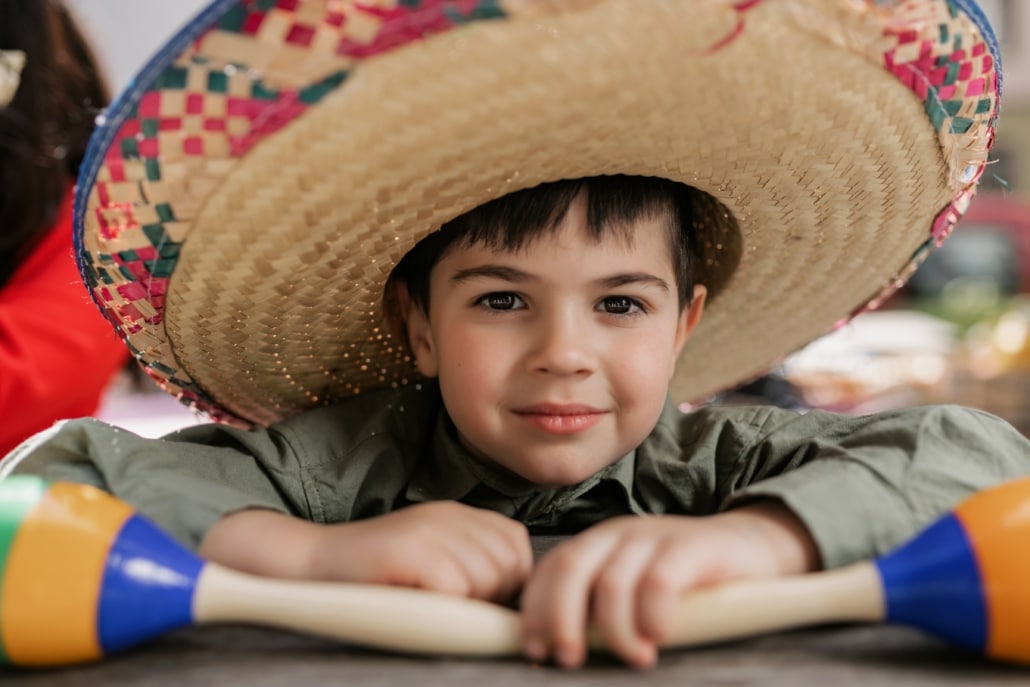Cinco de Mayo is one of the most significant celebrations for Latin Americans in the US, alongside Hispanic Heritage Month. And when speaking of Cinco de Mayo, you might think of tacos, burritos, colorful streamers, and mariachi bands. But there is more to this Mexican holiday than what meets the eye.
Enjoy a meaningful celebration with the family by sharing these interesting Cinco de Mayo facts with your kids.
9 Cool Facts About Cinco de Mayo
Cinco de Mayo is not Mexico’s Independence Day.
Most people believe that Cinco de Mayo stands for Mexican Independence Day, but that isn’t the case. Instead, Mexicans celebrate their day of independence on September 15 and 16. These dates mark the start of their fight for freedom against their Spanish colonizers.
Nonetheless, Cinco de Mayo remains an important holiday in Mexico, especially in Veracruz and Puebla.
It celebrates Mexico’s victory against Imperial France.
This holiday honors the triumphant Mexican army, who fought valiantly against the well-armed French army. In 1862, France attempted to take over Mexico City while the country was still in debt. The battle took place in Puebla de Los Angeles, which became the birthplace of Cinco de Mayo.
The Mexican Army beat the harshest odds.
The Battle of Puebla was, by no means, an easy feat for the Mexican people. Their army consisted only of 2,000 soldiers compared to the French’s whopping 6,000. Moreover, they only had old weapons and very few military supplies in their arsenal.
Despite the odds, the Mexican army emerged victorious under the leadership of General Ignacio Zaragoza.
The Battle of Puebla symbolizes a victory against invaders.
The Mexicans might have lost the war temporarily, but this battle became a sign of triumph for Mexico’s resistance movement. In the end, France finally withdrew their military forces from Mexico by 1867.
Cinco de Mayo is not a national holiday in Mexico.
Despite being a significant event, Cinco de Mayo is not considered a national holiday in Mexico. Some children don’t attend classes during this day, but it’s business as usual for the rest of the country. Banks, offices, and stores remain operational for this date.
Puebla hosts a month-long celebration of this event.
Puebla, the birthplace of Cinco de Mayo, begins their festivities a month before the fifth of May. The main event takes place at the Hill of Loreto, the location of the Battle of Cinco de Mayo. People don traditional costumes, dance around the streets, and watch military parades and theatrical performances that reenact their resounding victory.
Mexican Americans are among the first ones to celebrate this feat.
Historical accounts report that Mexican Americans in California celebrated the Mexican army’s victory in the same year the battle took place. This triumphant feat became a source of pride for the Latin community in the United States.
President Franklin Roosevelt helped popularize this Mexican holiday.
Years after the Battle of Puebla, President Roosevelt enacted the Good Neighbor Policy in 1933. This foreign policy aimed to build amicable relations with South American countries. It paved the way for stronger cultural ties through celebrations like the Cinco de Mayo holiday.
Cinco de Mayo surged in popularity in the 1960s.
Your kids might wonder how Cinco de Mayo became popular in the United States despite being a Mexican holiday. To answer this, it’s best to go back to the 1960s. Chicano activists spread awareness of this holiday as a victorious feat over European colonizers. The 1970s and 1980s emerged, and so did the Cinco de Mayo celebrations through American beer companies.
Mole poblano is the staple dish for this holiday.
One of the most interesting Cinco de Mayo facts is its traditional food. Tacos and burritos are fine Mexican dishes for this holiday, but an authentic Mexican celebration would include mole poblano. This dish consists of chicken or turkey covered in a chocolate-chili sauce called mole.
Discover Interesting Facts about Cinco de Mayo
Cinco de Mayo celebrates a momentous feat for Mexicans and the Latin community in the US. Teaching these important facts about Cinco de Mayo is a great starting point for nurturing your child’s cultural appreciation.
Learn more about Cinco de Mayo and other relevant holidays on the Rayito de Sol blog.











